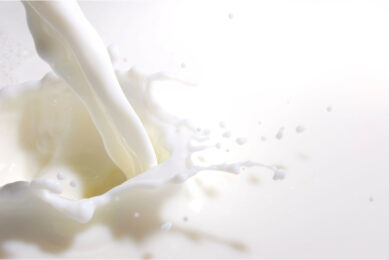Norwegian dairy farmers benefit from milk quota increases

There are not too many benefits to the Covid-19 era, but one thing it has done is make consumers appreciate their locally produced food more. Consumers in Norway have demanded more dairy produce since the pandemic hit which has forced an increase in the farmers’ milk quotas.
Bjornhild Vigerust, 33, came to own her family dairy farm in 2018 and has seen her quota allowance increase to 107% this year thanks to the extra demand for dairy produce.
The boost has also prompted Bjornhild to change her herd’s management plans moving into full production during the summer rather than drying the cows off and sending them to the mountains, as is traditional there.

“Our farm is located 550m above sea level near a small village called Dovre, in the mountain areas in central Norway,” said Bjornhild. “I am the 7th generation on the farm, taking over from my father, now 61, in 2018. I met my husband Bjorn, 29, in 2017, and we run the farm together, although I work on the farm full-time and he works off the farm.”
Bjornhild farms 54 hectares and is milking 61 Norwegian Red cows in a DeLaval robotic unit averaging 3 times a day. In addition, there are 10 dry cows, 30 heifers, 60 calves, and 18 bulls for beef.
Profile
Location: The farm is located near a small village called Dovre, in the mountain areas in central Norway
Farm: The farm is run by Bjornhild and Bjorn Vigerust
Land and breed: 54 hectares is used and 61 Norwegian Red cows are milked
Milk: Milk is sold to TINE, the largest local producer, distributor and exporter of dairy.The herd averages 208 kg per cow per year at 4.37% butterfat and 3.43% protein.
“Most of our cows calve in the spring and summer times,” says Bjornhild. “Both cows and heifers are let out in mid-May and can walk in and out as they please all summer until September or October when it usually snows and gets colder.
“We use AI only as my husband has the Geno insemination certificate so we don’t have to rely on the vet’s working hours.
“We sell our milk to TINE, the largest local producer, distributor and exporter of dairy products with 11,400 owner members and 9,000 co-operative farms. The average milk price per litre is around 4.80 Norwegian Krone (US$0.57) per litre.
“The cows are fed with a 30% protein concentrate and silage bales. We only grow roughage on our farm, due to the cold climate and short growing seasons,” she adds.

Seasonal differences on the farm
In Norway, the short growing seasons cause some difficulties harvesting enough silage for the winter, and also the quality can vary due to long periods of cold and rain.
Bjornhild states that “Dairy farmers here dry their cows during the summer, and then let them spend their vacation in our beautiful mountain pastures. However, that causes shortages of milk in the summer, and TINE then offers a higher milk price during the summer months.
“This is why we plan insemination and calving to produce as much milk as possible during these months, but then again that means we have to use some of our infields for pastures. Fields which we could have harvested instead, and then used more of the mountain pastures for grazing but we can change the system to suit.”

Milk quota and technology
“Actually, the coronavirus pandemic has changed the food market in Norway. With more import restrictions and less Norwegians traveling to Sweden to shop for cheaper food, the demand for Norwegian farm produce is increasing each month.
“So, you can say we farmers are finally appreciated, and are asked to produce as much milk as we possibly can, hence the increase in quota production. It’s sad to realise that it takes a pandemic for consumers to understand the value of providing our own food, but it seems to be the case in Norway,” she says.

New technology and equipment play a vital role in running Bjornhild’s farm using automatic feeding with a TKS CombiCutter, belt, and a roof feeder from Reime. Plus there is a NorCar 755 mini-loader used to feed the calves and bulls.
“Even though we have invested a lot in both buildings and new technology it’s not all automatic on our farm as I like to spend time with the cows, clean and make sure everything is ok,” she says.
“The mini-loader is a highly valued machine on the farm and does all kinds of tasks in addition to feeding the cows. We upgraded our robotic milker with a body condition score camera to increase feeding efficiency, increase milk production, and decrease health issues.
“We installed the DeLaval smart selection gate in 2009, and with 1 additional manual one way gate we get a smooth and stress-free cow flow in the barn.”

“Soon we will also install a Lely Discovery mobile barn cleaner, which will both ease the manual cleaning and hopefully make sure the cows hooves stay clean and healthy,” she said.
Looking ahead to the future, Bjornhild hopes to increase the herd yield and increase cow comfort in the barns.
“Comfort for the calves is also important,” she says. “We give them a large pen with lots of straw bedding, ad-lib milk in the automatic calf feeder, and plenty of hay/silage, calf concentrate and water.
“Next year, we plan to build an outside pen for the calves to be out in the summer. In addition we plan to try growing grain in the neighbouring Lom village and we are currently cultivating new land for forage and pasture.”
Read more about how Covid-19 has impacted the dairy sector, here.
Join 13,000+ subscribers
Subscribe to our newsletter to stay updated about all the need-to-know content in the dairy sector, two times a week.










